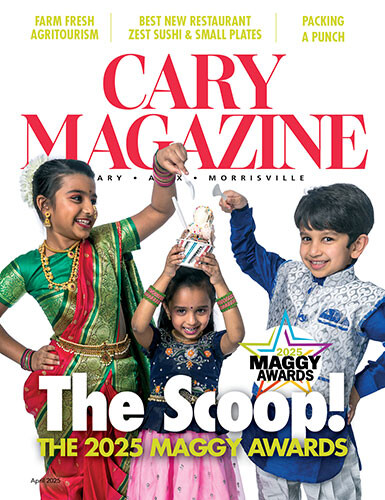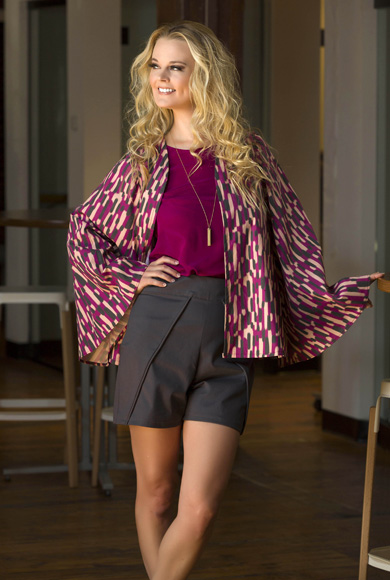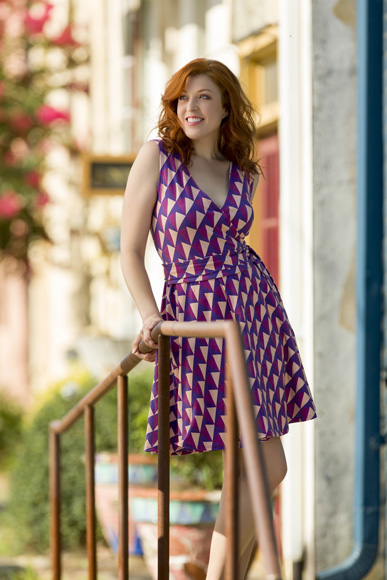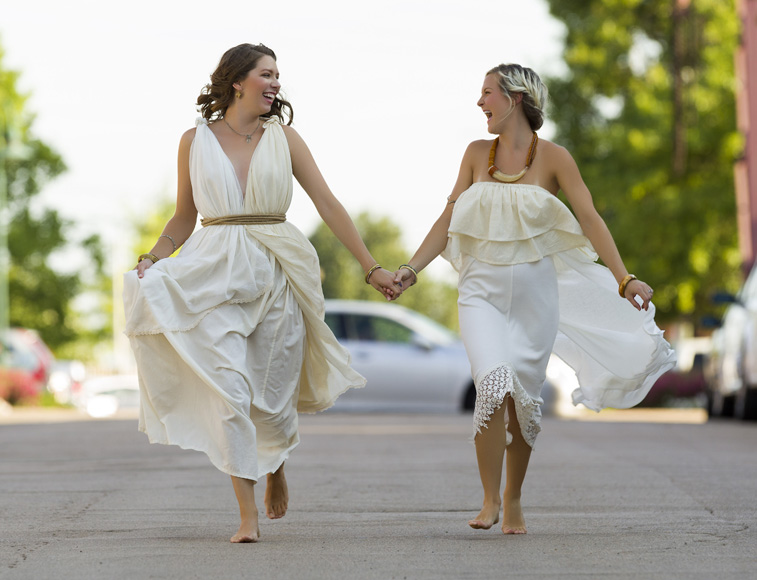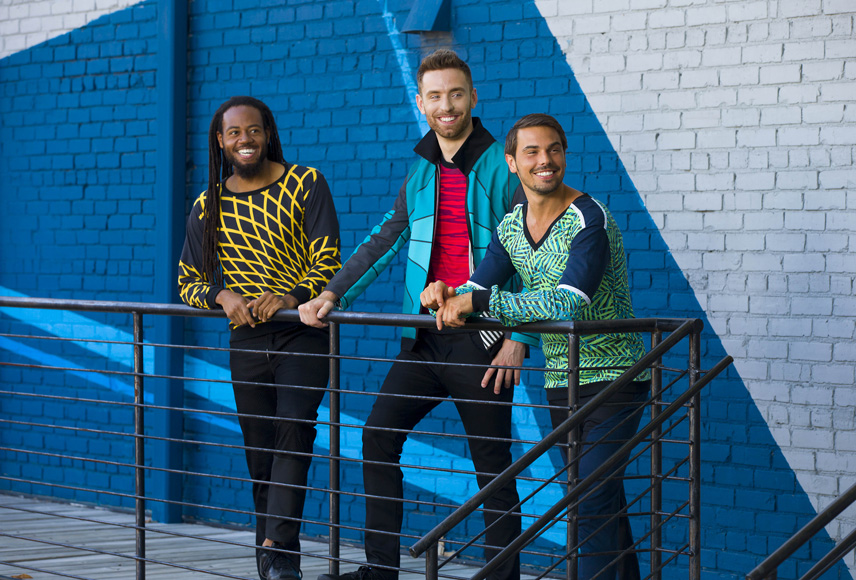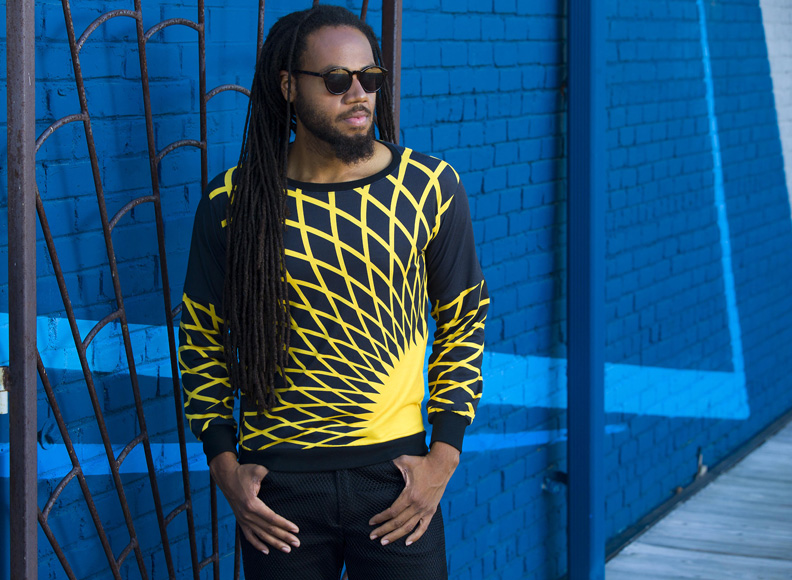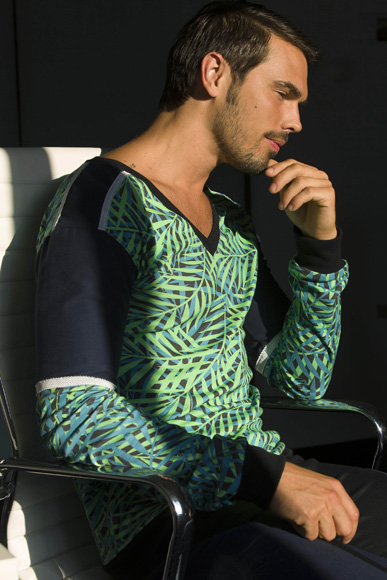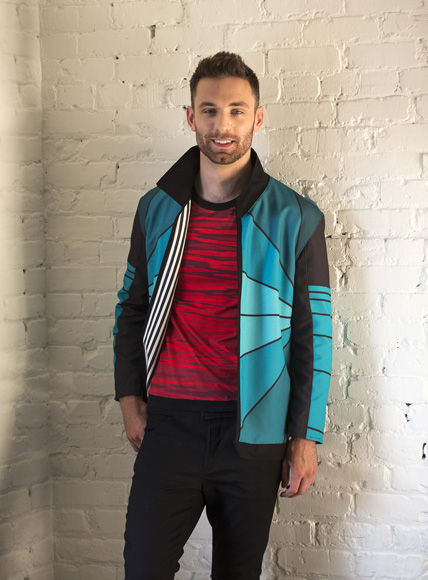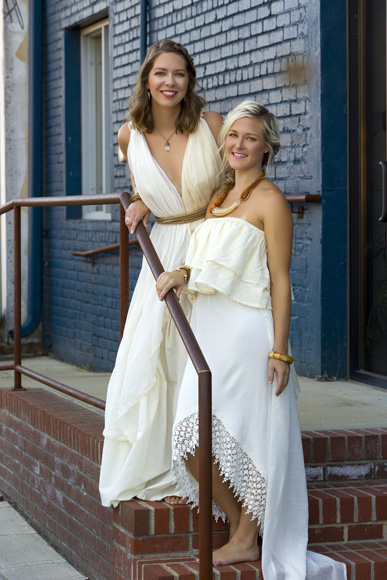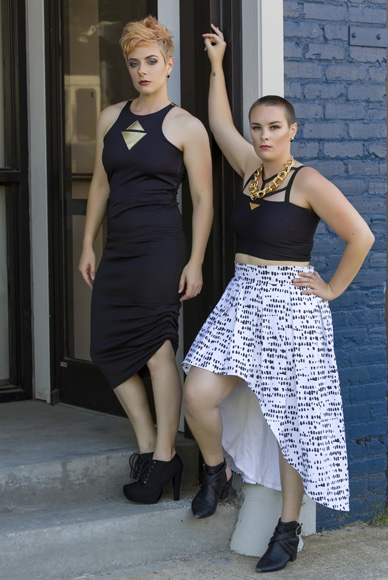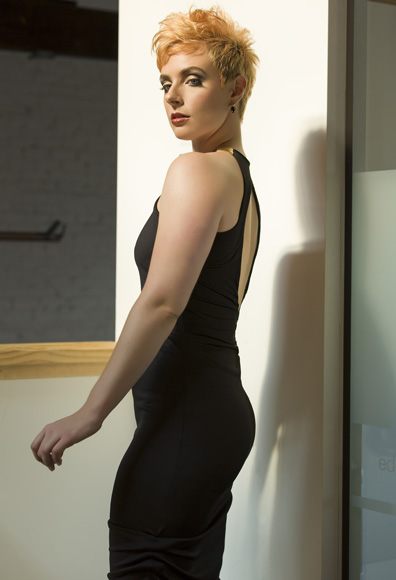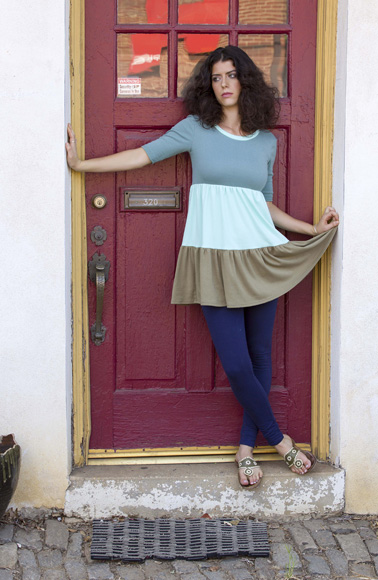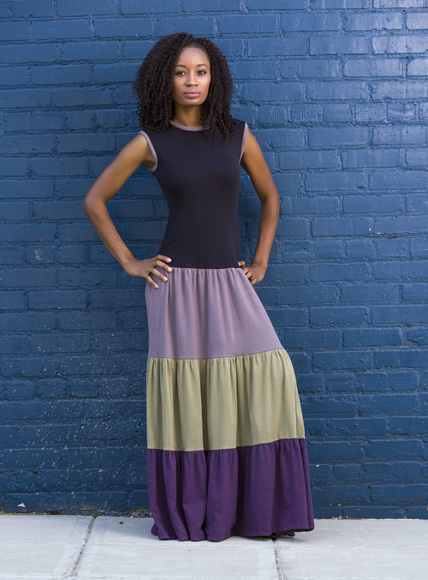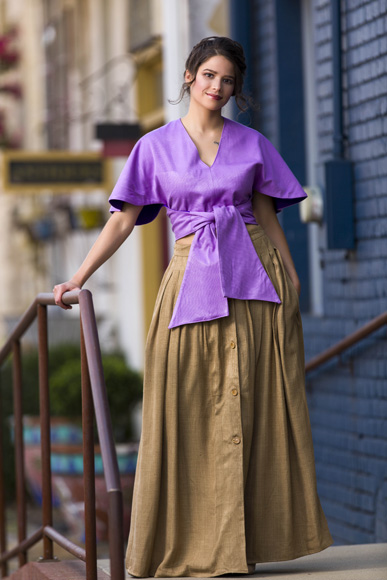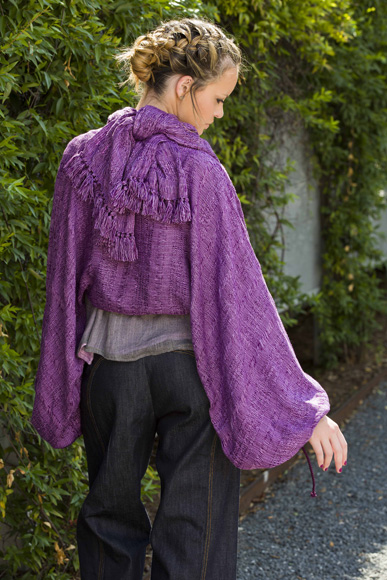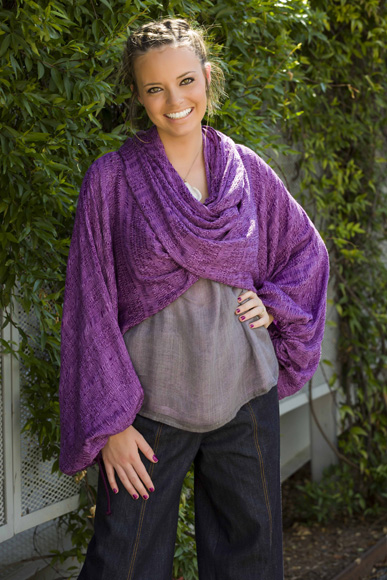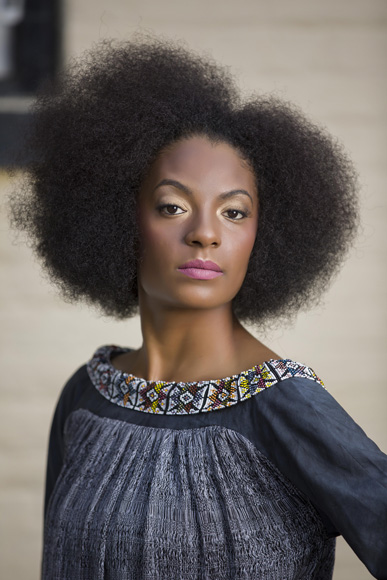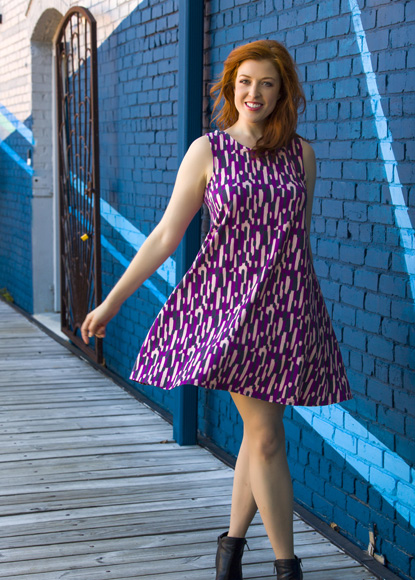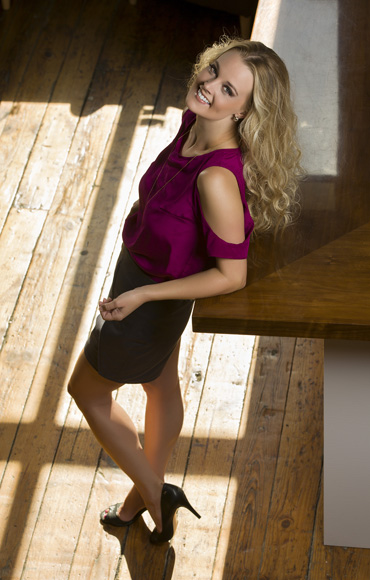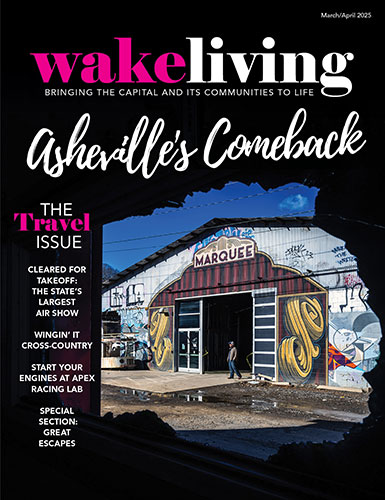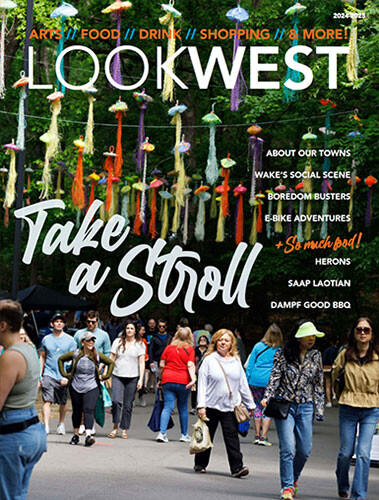Local designers offer creative, authentic eco-chic apparel
A movement is underway to “redress” the Triangle, from the inside out.
Changing the way we think about fashion — and create it — is the work of Redress, a nonprofit educating people on the impact of their buying decisions, in part through the annual Redress Fashion Show highlighting responsibly-produced apparel.
“All of us wear clothing and we’re making a choice every time we purchase that apparel,” said Redress Executive Director Beth Stewart. “Most people have a complete disconnect with how their clothing is produced. They have no idea who made it or what it’s made from. We are actively working to change people’s mindsets about what fashion is.”

Inspired by the traditional wear of her fair-trade partners in Guatemala, designer Katina Gad offers up this fully-lined skirt with pockets, naturally dyed with coconut and coffee, and boasting hand-carved wooden buttons. The top is made of cotton grown, spun and woven in Guatemala, and dyed using basil.
The fashion industry has a massive impact on the environment, and is counted among the world’s largest polluters. It also impacts human rights, with some 40 million garment workers worldwide.
“Right now, there are not enough options for consumers to buy sustainable apparel,” Stewart said. “Without providing that choice for consumers who want to purchase differently, the current negative cycle will continue.”
But Stewart and the Redress community see positive change happening in the Triangle fashion scene, where entrepreneurism thrives.
“All of this is leading to a growing interest in creativity and authenticity in terms of connecting with the stories behind something, a product, a store, a restaurant,” Stewart said. “There is a strong pride for North Carolina, and making things in the South.”
So what is eco-fashion?
“We consider sustainable fashion to be anything where the designer is consciously considering these impacts when creating it, perhaps by using more eco-fabrics or ensuring a living wage within their supply chain,” Stewart said. “We also consider resale and vintage to be another aspect of sustainable fashion — responsible purchasing by buying something that doesn’t add to the enormous waste created by the industry.”

This dress is dyed with eucalyptus and charcoal dyes; its neckline is hand-beaded by Gad’s fair-trade partners in Guatemala.

Left: Gad designs these colorful, durable backpacks, while her sweater features hand-sewn elements. Right: The purple multi-directional wrap can be worn five different ways, and is colored using basil and walnut dyes. The silk tank underneath was dyed in basil and charcoal, and the jeans are made with denim from Cone Denim’s White Oak plant in Greensboro.
Six designers were selected to take part in this year’s Redress Fashion Show experience. Each produced fashion collections, took part in educational sessions and mentoring, culminating in the fashion show and exhibition held in August, which puts them in front of leaders in the fashion and textiles industry.
“These six designers love being a part of the North Carolina fashion scene and recognize the growing opportunities here,” Stewart said. “They simply need more knowledge about production and creating a sustainable business, in addition to support from the community, to keep growing their brands. For many reasons, they are invested in the idea of sustainable fashion and believe that there is a growing market for that in the Triangle.”
 Katina Gad, Raleigh
Katina Gad, Raleigh
Unity Outfitters, unityoutfitters.com
About twice a year, Katina Gad travels to visit her colleagues at the Casa Flor Ixcaco women’s weaving co-op in Guatemala, her fair-trade partners in creating environmentally-conscious fashions and accessories.
For this fall collection, inspired by these Mayan women, Gad uses 100 percent organic and naturally dyed cottons, each piece woven and dyed by the co-op using dyes such as eucalyptus, basil and coconut.
“The fabric is fairly traded, and purchasing it helps to provide women and children in rural Guatemala with food, education and other necessities,” Gad said. “The finished clothing is designed, cut and sewn here in Raleigh.”
While the pieces pictured were made by Gad for the fashion show, when hiring to fulfill larger orders she pays a living wage to local and single mothers to do the cutting and sewing.
“My goal is to produce beautiful and classic looks while providing meaningful work to women in need both here in North Carolina and in Guatemala,” she said.
On the Redress experience: “It has helped me get my process streamlined, I’ve made a lot of great connections, and had my eyes opened to new possibilities for my business.”
 Mary Ashlyn Thomas, Broadway, NC
Mary Ashlyn Thomas, Broadway, NC
Broadway Squared, maryashlynthomas.com
Seeing a need for more office-appropriate, day-to-night clothing options, Mary Ashlyn Thomas found inspiration in her daily commute: Abstracted florals and angled style lines that have launched Broadway Squared, such as the dress straps that mimic highway overpasses.
The clothes are made using 100 percent organic cotton twill, poplin, silk crepe de chine, and cotton-spandex from Spoonflower. They’re also meant to be durable, and to flatter various body types.
“Comfortable is important,” said Thomas, who designs her prints to encompass the classic looks she loves, with modern design elements. “I want it all to mix and match.”
On the Redress experience: “I’m just getting started, and they’ve shown me the steps I need to take in business planning, the things to think about. Learning from people who have this level of experience has been very helpful.”

The cold-shoulder blouse is made of silk crepe de chine, and the shorts of 100 percent organic cotton twill. Thomas designs her prints to encompass the classic looks she loves, with modern design elements.

This mix-and-match line by Mary Ashlyn Thomas was inspired by her daily commute, such as the straps on her cotton-spandex swing dress, which mimic highway overpasses.
 Piper Honigmann, Carrboro
Piper Honigmann, Carrboro
Pipevine, etsy.com/shop/pipevine
Having spent a few years living on a sailboat with her young daughter, Piper Honigmann learned a lot about waste and pollution along our waterways, issues she addresses in her fashions, using organic cotton knits made by Spiritex in Asheville.
“My line started with the fabric, locally sourced and organic,” Honigmann said. “The sustainability of the line is important; it will be made in North Carolina, maybe even in Carrboro.
“And the main theme is mixing colors in unusual ways. These pieces fit almost everyone, are wearable and comfortable.”
Her tiered dresses are made using long rectangles of fabric to reduce waste and maximize her color-mixing capabilities.
On the Redress experience: “My mentor has encouraged me to think, to compare selling my fashions directly on Etsy, or wholesaling to retailers.
“There’s been a fashion scene developing in Raleigh, and now I’ve met successful people in the industry, who all have some good tips about different aspects of the business — and there are a lot of aspects!”

Honigmann uses long rectangles of cotton knit fabric in her tiered designs, resulting in very little fabric waste and offering maximum color mixes. “My line started with the fabric, locally sourced and organic,” she says. “The sustainability of the line is important; it will be made in North Carolina. And the main theme is mixing colors in unusual ways. These pieces fit almost everyone, are wearable and comfortable.”
 Ashley Mason, Raleigh
Ashley Mason, Raleigh
Rook and Roman, rookandroman.com
Strength and power is the focus of Ashley Mason’s collection, which uses a restricted color palette, clean lines, and remnants of knit, jersey, synthetics and woven fabrics printed at Spoonflower.
“My clothes are inspired by the feminine glam, Studio 54 era,” said Mason, “and focused on female strength and ownership, and power. Shape and flow are important to me, in dramatic silhouettes.
“An important idea to me is that high fashion with environmental consciousness should be accessible to everyone, of every body shape and social-economic status.”
On the Redress experience: “My favorite part has been learning about the nitty-gritty work that comes after the big idea, like techniques, manufacturing and life cycle. This is not an education you would get anywhere else.”

Shape and flow are important to designer Ashley Mason, who uses a limited color palette and clean lines to create the dramatic silhouettes of her collection, representing female strength and power.

This fitted dress is made with knit, jersey, synthetic and woven fabrics. Jewelry is courtesy of Moon and Lola.
 Juliana Fadl, Durham
Juliana Fadl, Durham
Moon. Flower. Child, moonflowerchild.com; etsy.com/shop/oMoonFlowerChild
With overlapping layers and varying lengths meant to mimic rolling sand dunes, this serene collection titled Desert Sage by Juliana Fadl marks her first foray into bridal wear, as she prepares to become a bride herself in the coming year.
Her materials are handwoven cottons and natural dyes, jersey, and lace and macramé detail to echo desert foliage.
“It’s a journey of related imagery,” Fadl said, “the desert, sandy dunes, the touch of green and the transition from dark to purest white. I want people to think that here’s a bridal collection they haven’t seen before, something different in its colors and use of fabrics.”
Fadl also designs everyday wear for men, women and children.
On the Redress experience: “I’ve met other entrepreneurs and I’m learning from them, gathering new ideas and points of view.”

Handwoven natural materials shine in designer Juliana Fadl’s first-ever bridal collection. Her bridal gowns of overlapping layers and varying lengths are meant to mimic rolling sand dunes; the dress at top right is two pieces, with a jersey skirt and macramé detail.
 Timothy Cohen, Raleigh
Timothy Cohen, Raleigh
Perspectus Clothing,
instagram.com/perspectusclothing/
Math and science meet fashion in this menswear line by Timothy Cohen, a self-taught designer who incorporates the Fibonacci Sequence into his designs, a series of numbers in which the next is found by adding up the two numbers before it.
In nature, the sequence results in spirals such as those found in sunflowers and hurricanes. His bold designs are created using sustainably-made, digitally-printed fabrics from Spoonflower in Durham.
“It’s important to me to show everyone that we’re all connected,” Cohen said. “These patterns are one of many eye-opening examples of how all animals and people on earth are connected.”
On the Redress experience: “As a self-taught designer, this education on sustainability, how to manufacture, and the business side of fashion really helps show us the way,” Cohen said. “Fashion is so much more than the runway. I’ve met educators, distributors, people in the forefront of the industry.
“I’m working to become successful in a way that makes me happy.”



Designer Timothy Cohen marries math and science in his menswear line, with patterns reflected in nature. Pattern inspirations are sunflowers, ferns, and seahorses. The bold designs are created using sustainably-made, digitally-printed fabrics. “These patterns are one of many eye-opening examples of how all animals and people on earth are connected,” Cohen says.
